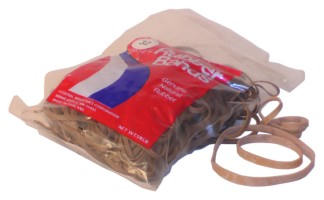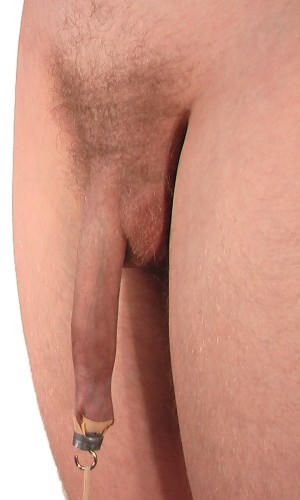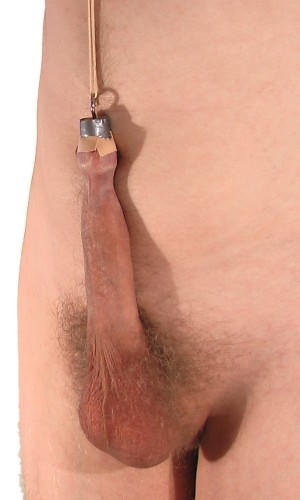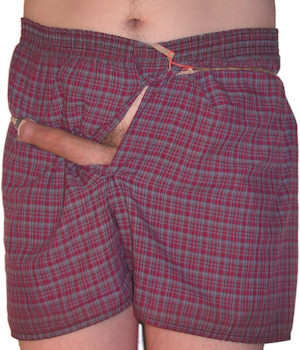|
No matter the taping method, it is the tension applied that is the basis of tissue expansion and is what makes non-surgical foreskin restoration work. By stretching tissue and keeping it under constant tension, cell division is stimulated thus growing more new tissue from the remains of the old. Tissue expansion is a slow process and a total restoration will take years of effort. How long, exactly, depends on a number of factors, including: how much foreskin you start with, what your ultimate goal is, and of course, how dedicated you are to that goal. The MTC method regimen is not at severe as some: T-taping with moderate tension done every day for a minimum of four hours a day, but ideally eight, and cross-taping at all other times. With this, you can reasonably expect a full restoration to take between two and four years. |
| See the video of the MTC method |
Elastic bands

|
There are many possible sources of tension, but the easiest and most adaptable is the elastic band. Bunching them in groups and then tying the groups into a chain provides an excellent belt for use in T-taping. Varying the strength is simple: a single elastic may make up each link in a loose belt, two elastics bunched together a tighter belt, three tighter still, and so on. |
Tensioning styles
 |
The foreskin can be stretched downward by attaching the belt to shoe or to a paddle you can stand on. When clothed, the penis and belt can easily be directed down a pant leg. |
 |
Stretching upward can be accomplished by attaching the belt to a loop around the neck or shoulders. |
 |
Stretching around the waist or legs is possible by attaching the belt in some manner to your clothing. This style is the least cumbersome if you need to move around frequently, but the belt digging into your waist or legs can become uncomfortable. |
Other possibilities

|
The above styles are only a few possibilities. Some prefer to devise a rigging of some sort pulling the penis perpendicular to the body. One very easy and convenient rig to make is simply a nail under your desktop that the belt can be hooked to when seated. Clothed it is possible to pass your penis through your fly. |
Tension
|
Whatever the style, do not use too much tension. It should never be uncomfortable and certainly never painful. There should be enough tension that the foreskin is kept stretched to its maximum length. If it is not fully stretched, mitosis will not occur to any significant degree and new tissue growth will be very slow. New tissue will not grow faster if much more tension than is necessary is used and it may even be slowed as great tension on the penis can constrict vessels and limit blood flow. Use constant, moderate tension for the duration of your T-taping. For the first hour or so, you may need to periodically tighten the belt as the foreskin stretches, but once it has been stretched to its maximum, the tension should be left alone. The exact amount of tensile force needed may vary from person to person, but a good range is between four and seven newtons (or the equivalent of a one to one and a half pound weight). |
Unhooking
 |
Unlike other variations of T-taping that do not use a hooked cone, this method allows for quickly connecting and disconnecting from tension sources and is totally concealed by any normal clothing. When unhooked, the cone continues to hold the stretched foreskin and provide minor tensioning, and the silicone covering the cone affords cushioning between it and the glans penis. |